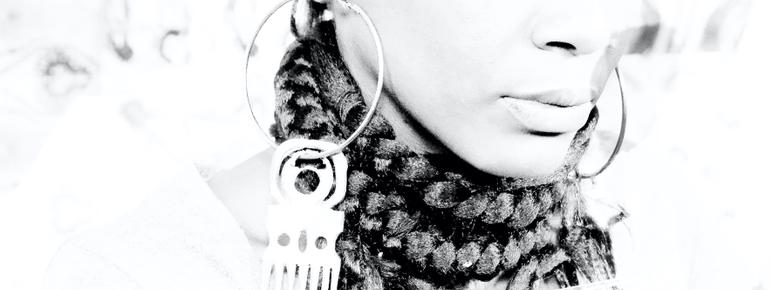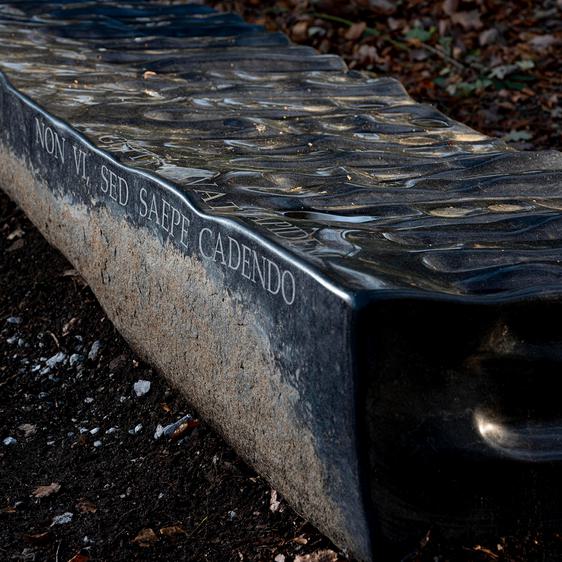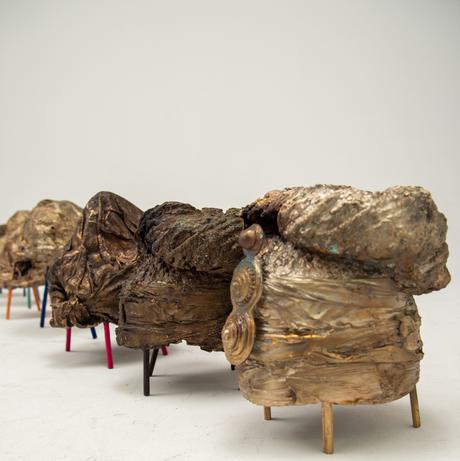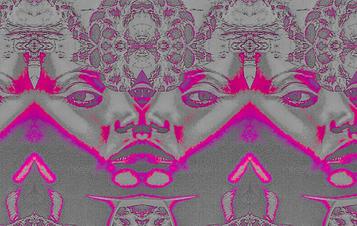
About Kedisha Coakley
Working with sculpture, photography and printmaking, Kedisha Coakley reconsiders objects and cultural symbols, and reframes history, race, culture and conventions of curatorial practice.
Kedisha Coakley's work inspires important and timely dialogues, and encourages viewers to reconsider social-historical narratives. By exploring ideas of home, memory, class, status and cultural affiliations, she attempts to create inclusive and recognisable spaces – a familiar place of ownership and truth, transparency, opacity, belonging and hyper-visibility for all. Her work challenges stereotypes and often examines Afro Caribbean hair and its place in the lives of black women. Motifs and patterns of braided hair feature in her sculptures and mural wallpapers, and attempt to interrupt Western representation and connections with colonial histories.
YSP supports artists to develop their practice at every stage of their career. Coakley is an artist who recently completed her BA in Fine Art at Sheffield Hallam University. In 2020 she was the recipient of YSP’s Yorkshire Graduate Award, a residency that is awarded each year to a graduating student to help them reflect and move forward.
This exhibition will be Coakley’s first public gallery show and provides the artist with the opportunity to increase the ambition of her practice and test new ideas. During her current residency at YSP, Coakley is developing work that further encourages reconsiderations of the social and historical narratives bound up with objects of different cultures. She is using the historic Bretton Estate and the work of Henry Moore as starting points from which to make new sculpture.
The exhibition will feature the new work developed onsite, alongside existing works from her Ritual series, a collection of sculpture that draws from personal experiences and examines the ritualistic-like routine to preserve and maintain her own hair.
Other works featured include photographs taken from The Right to Opacity series, displayed against the artist’s bold, mural-wallpapers developed from collagraph printed braided synthetic hair. Coakley has increasingly become interested in the development and popularity of wallpapers during the British Empire between the 18th and 20th centuries. She explores histories of familiar patterns and brings focus on how some of these symbols have been re-appropriated for darker purposes in colonial history, such as the Fleurs de-Lis used as a mark of supremacy in the punishment of branding. Coakley reclaims and brings together symbols in a modern context with Adinkra Ghanaian symbols which represent freedom, hope and endurance.
"YSP allows for certain freedoms of interpretation. The outdoor space in particular allows artworks to be viewed in a non-prejudicial environment and enables the artwork to respond to its environment without interference. I think for me that is probably about acceptance, the acceptance of difference.” - Kedisha Coakley
You may also like
- Art Outdoors

Roger Hiorns: Seizure
In 2008 Roger Hiorns transformed an empty council flat in Southwark, London into Seizure, a sparkling blue world of copper sulphate crystals. The work was created using 75,000 litres of liquid copper sulphate, which was pumped into the former dwelling to create a strangely beautiful and somewhat menacing crystalline growth on the walls, floor, ceiling and even the bath of the abandoned flat. - News

Yorkshire Sculpture Park announces 2023 programme
16 November 2022 - Profile

Sue Stuart-Smith
- Art Outdoors

Willem Boshoff: Flagstone
Willem Boshoff’s Flagstone is a sculpture and a seat, positioned here overlooking Upper Lake to provide a space for rest and contemplation. In summer 2018, Boshoff spent a month at YSP, researching and meticulously recording the flora and fauna. Each day he walked the paths around the Park and became particularly fond of the areas around the Lakes. The residency was followed by an exhibition in Upper Space and the subsequent gift of Flagstone as a permanent work for YSP’s landscape.


